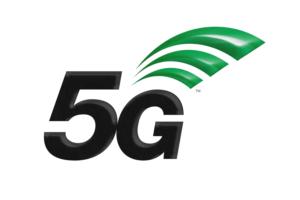
 Image: 3GPP
Image: 3GPP
With mobile operators’ marketing departments already throwing around claims about their 5G services, the United Nations is weighing in with its definition of what qualifies a network as next-generation.
Verizon Wireless will begin delivering “5G” service to select users in 11 U.S. cities in mid-2017, even though some places don’t yet have access to 4G. And at the Mobile World Congress 2017 trade show in Barcelona, companies including Intel, Qualcomm and Ericsson will be promoting their moves towards 5G.
But what marks the difference between one generation of mobile technology and the next?
There are 13 technical requirements for next-generation networks on the draft list published by the International Telecommunication Union, the UN agency that sets rules for radio spectrum usage and telecommunications interoperability.
Among the requirements are peak download speeds of up to 20 gigabits per second and peak upload speeds of up to 10 Gbps.
We all know that those “up to” speeds are rarely seen outside the marketing department, so the ITU has helpfully set out what we should expect to see in the real world. Users should experience typical download speeds of 100 megabits per second, and typical upload speeds of 50 Mbps, it said.
When things get really busy, it also wants networks to be able to deliver a minimum level of service even when there are 1 million connected devices per square kilometer (2.59 million per square mile), handy for texting from crowded presidential inaugurations or keeping tabs on the worst excesses of IoT clutter around your home.
It also calls for networks to offer minimum levels of service to people moving at different speeds, and sets out different service level requirements for users depending on whether they are stationary, walking, or in a vehicle. In dense urban environments it doesn’t expect those vehicles to exceed 30 km/h, but in rural areas it sets two service levels for vehicles: those traveling between 10 and 120 km/h, and those traveling up to 500 km/h. If anyone ever builds a hyperloop (the average speed of which is expected to approach 1,000 km/h), internet access will not be guaranteed aboard.
After that, things get a lot more technical, with minimum requirements for spectrum availability, traffic density and several measures of spectral efficiency.
Those requirements are all fine and dandy, but unfortunately for the puzzled consumer, the ITU’s draft report is titled “Minimum requirements related to technical performance for IMT-2020 radio interface(s)” and makes no reference to 5G, although that’s what it really means.
The ITU has a history of choosing such cryptic names: IMT-2020 is the follow-on to its “IMT-Advanced” specification, known to the rest of the world as 4G, which was itself preceded by IMT-2000, more widely known as 3G.
The 2020 in the title refers to the year the ITU expects the IMT-2020, or 5G, specification to be ready.
Standardization work isn’t just going on at the ITU: The Third Generation Partnership Project or 3GPP is working on a “5G” specification that it intends to submit to the ITU by October 2020, and earlier this month unveiled one of the first deliverables, a new logo.
 3GPP
3GPPThe Third Generation Partnership Project (3GPP)’s “5G” logo.
If you see it on a phone before the end of 2018 though, when 3GPP plans to publish the first release of its specification, then it’s probably a fake.




